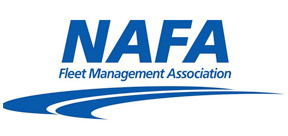Police museum documents regional cooperation

Pictured left to right, behind Kramer, are John Sess, president of the Westwood Civic Association; Pete Witte, president of the Price Hill Community Association; Police Chief Thomas H. Streicher, Jr.; Councilman Chris Monzel; and District Three Commander Capt. Kimberly Frey. (Photo provided)
There are leaders and there are followers. Two hundred years of law enforcement innovations puts the Ohio-Indiana-Kentucky region squarely in the former camp, and retired Cincinnati Lt. Stephen Kramer can prove that’s where it belongs.
Kramer is the gatekeeper of a crush of memorabilia, relics and regalia that overwhelms the Greater Cincinnati Police Historical Society Museum in Cincinnati, Ohio. The five-year-old, privately-funded museum narrates the tri-state area’s journey from one of the first official police forces established in the U.S. to one that boasts a research and
development laboratory and consults on private sector development of state-of-the art law enforcement tools.
The GCPHSM is one of two police museums in Ohio. The other, 250 miles to the northeast, curates the specific legacy of Cleveland’s department. Institutions in Mobile, Phoenix, San Francisco, New York and other cities do the same for their municipal forces. The American in Florida and the multi-million dollar National Law Enforcement Museum currently under construction in Washington, D.C., join a handful of others that have a national focus. But the GCPHSM’s regional, multi-jurisdictional, inter-state mission stands alone in the museum world.

According to Director Stephen Kramer, children and adults alike gravitate to the museum’s firearms exhibit, This young man found a different display item more to his liking, however. (Photo provided)
Kramer’s research and the extensive archives of the GCPHSM document that being unique is par for the course for police departments in the central Ohio Valley. Interagency cooperation became the norm some 200 years ago, bucking the entrenched expectation. Federal agencies including the Drug Enforcement Administration, the Bureau of Alcohol, Tobacco and Firearms and the Federal Bureau of Investigation have consulted with local agencies to learn techniques of financial fraud investigation and fugitive apprehension and have embedded local officers from the tri-state region on national drug cases, an armed fugitive task force and other initiatives.
Over 800 documented communities once populated the rural landscape north of Lexington, south of Indianapolis and between Columbus, Ohio and Columbus, Ind. Hundreds of law enforcement agencies served those eight counties and dozens of townships, including eight sheriff’s departments and dozens of ranger groups and anti-thieving protection associations.
During the 1800s groups similar to the Texas Rangers operated throughout the region. Among them were the Delhi and Solar Heights Rangers, the Cholerain/Springfield Townships Protective Association and Anti-Horse Thief Association.
“One of reasons we have the uniqueness of a museum that represents an entire region is because it is impossible to dissect any one of us apart from each other. We’ve been working together for so long,” Kramer said.
Even so, erecting a museum that testified to that relationship was slow in coming.
Numerous attempts between the 1950s and ’90s failed. At a 1998 police memorial service, the question of a potential museum’s liability surfaced again.
Several collectors and Christine Saunders, the mother of a sergeant and the person who raised the question, formed a board of directors that successfully incorporated in 1999. The Greater Cincinnati Police Historical Society Museum opened in 2006.
Slowly but steadily, law enforcement agencies and the public responded with visits and donations of memorabilia. Lately, the institution’s renown has picked up steam.
“Since we established ourselves, it took people a while to believe that we were here to stay. Now they do, and the contributions are coming in like a deluge” Kramer said. “Our storage areas are overflowing, we’re just growing in popularity so fast.” A fundraising effort kicks off soon to build or purchase a larger museum facility.
“Some agencies haven’t come to visit but at least half have given us a full uniform, which is probably a fairly expensive venture for a small department. Probably around 50 percent participate actively. Which ones acknowledge that our museum represents their agency? That’s probably around 90 percent,” he figured.”
Incorporated into the museum’s mission is a solemn dedication to the men and women who made the ultimate sacrifice while wearing those uniforms. The GCPHSM gave itself a mandate to memorialize and remember officers who are killed in the line of duty. Officers recently killed as well as those long deceased are put in front of the public on the museum’s website, and volunteers take on the responsibility for keeping up fallen officers’ graves, even restoring them when necessary, and participating in memorials.
“Why? I guess because there’s a certain emotion attached, not just by police officers for police officers, there’s an attachment to the guardians of the community. They’re out there every day making sure you’re safe and you can sleep. So when they’re killed, it’s emotional,” Kramer said.
Learn more about the Greater Cincinnati Police Historical Society Museum,
959 W. Eighth St., Cincinnati, at www.gcphs.com or call (513) 300-3664.
The museum is open from 10 a.m. to 4 p.m. Tuesday, Thursday and Saturday. There is no admission fee.




do you have regional shows where people can have a booth and show poducts?
We have a listing of regional events at ourEvents Calendar. You can also find this list on page 34 of our Latest issue
The Municipal does not currently host any events.